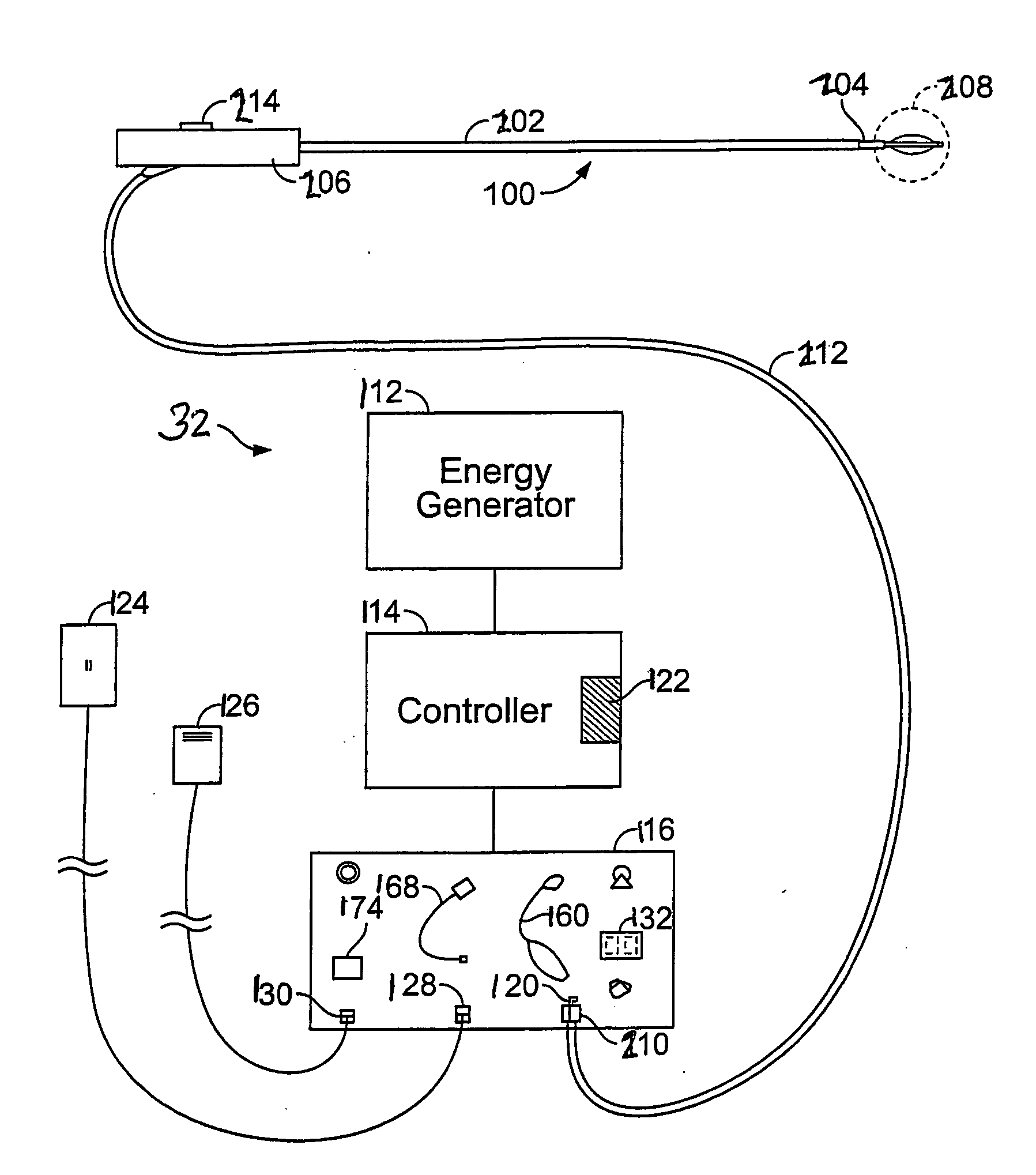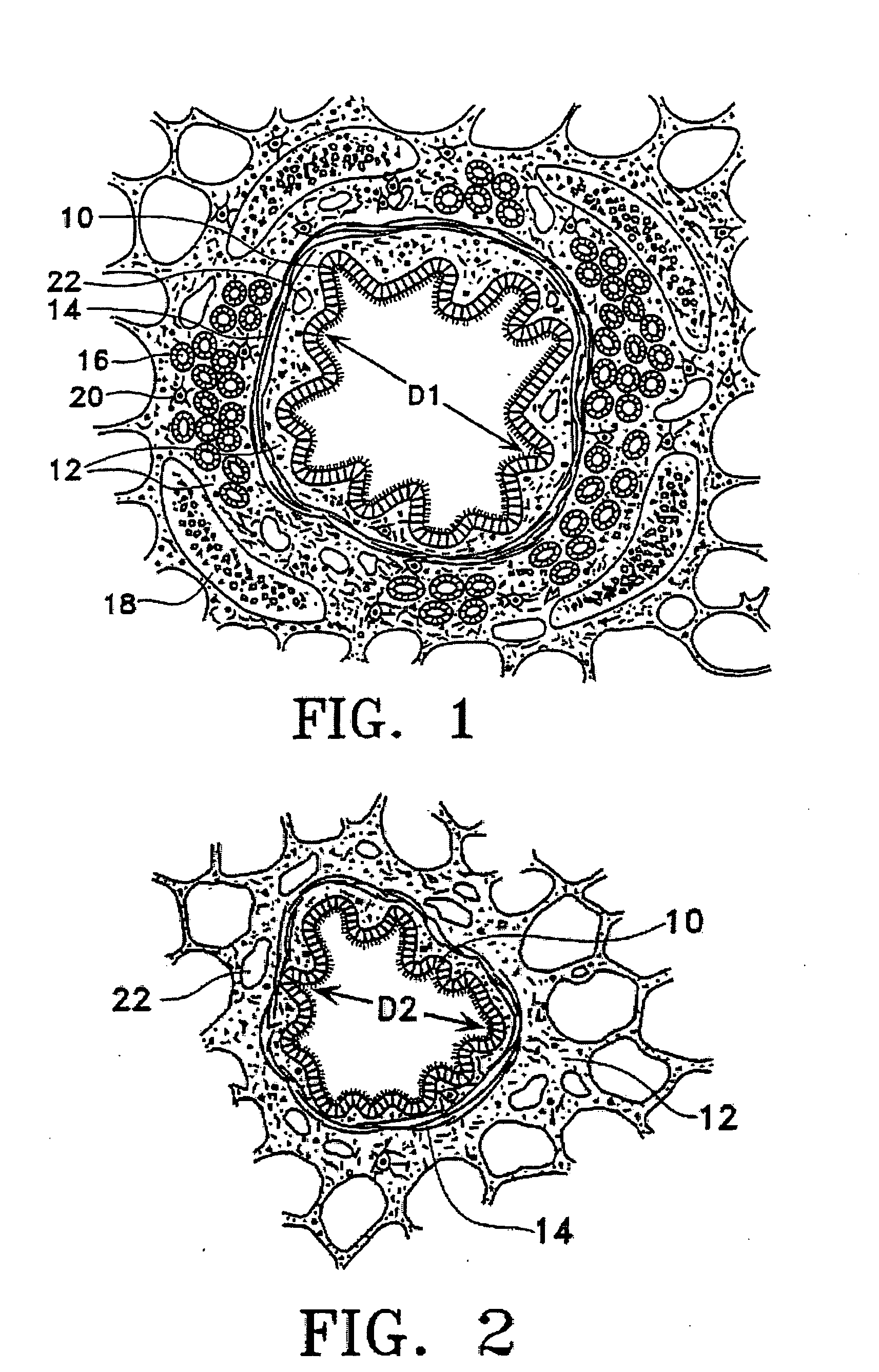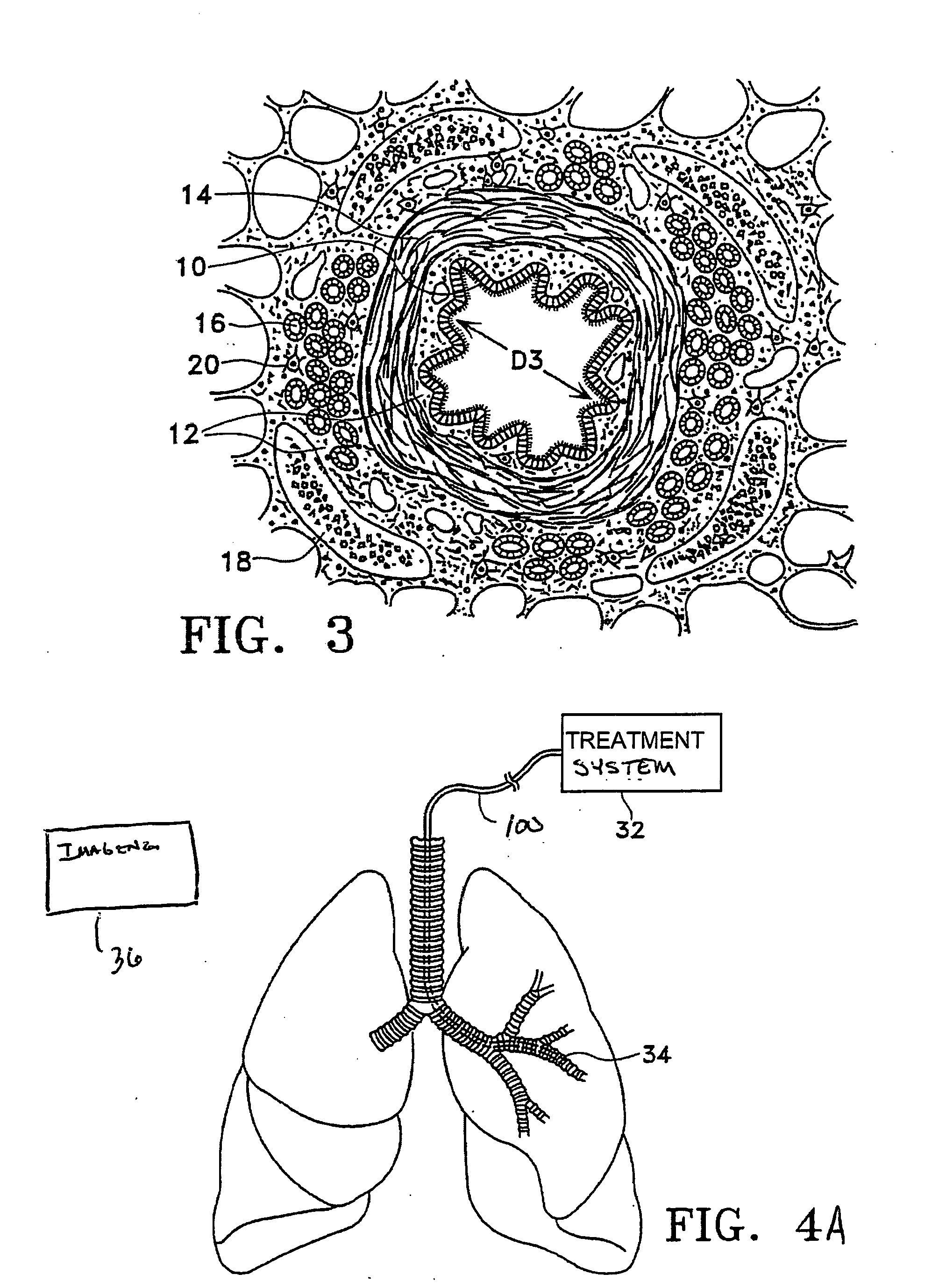Methods for treating airways
a technology for airways and lung, applied in the field of lung treatment, can solve the problems of affecting the function of the airway wall, affecting the ability of the airway to respond to airway hyper-responsiveness, and difficulty for asthma sufferers to breathe, so as to reduce the ability of the lung, reduce the effect of lung ability, and evaluate the effect of the procedur
- Summary
- Abstract
- Description
- Claims
- Application Information
AI Technical Summary
Benefits of technology
Problems solved by technology
Method used
Image
Examples
Embodiment Construction
[0042] The invention relates to methods for improving airflow through the airways of a lung having reversible obstructive pulmonary disease. It is intended that the invention is applicable to any aspect of reversible obstructive pulmonary disease, including but not limited to asthma. One way of improving airflow is to decrease the resistance to airflow within the lungs. There are several approaches to reducing this resistance, including but not limited to reducing the ability of the airway to contract, increasing the airway diameter, reducing the inflammation of airway tissues, and / or reducing the amount of mucus plugging of the airway. Another approach to reducing resistance is to increase the resting airway diameter of an airway such that any subsequent narrowing will not reduce the airway to a diameter such that obstruction to airflow is discernable by the patient. The present invention includes advancing a treatment device into the lung and treating the lung to at least reduce t...
PUM
 Login to View More
Login to View More Abstract
Description
Claims
Application Information
 Login to View More
Login to View More - R&D
- Intellectual Property
- Life Sciences
- Materials
- Tech Scout
- Unparalleled Data Quality
- Higher Quality Content
- 60% Fewer Hallucinations
Browse by: Latest US Patents, China's latest patents, Technical Efficacy Thesaurus, Application Domain, Technology Topic, Popular Technical Reports.
© 2025 PatSnap. All rights reserved.Legal|Privacy policy|Modern Slavery Act Transparency Statement|Sitemap|About US| Contact US: help@patsnap.com



